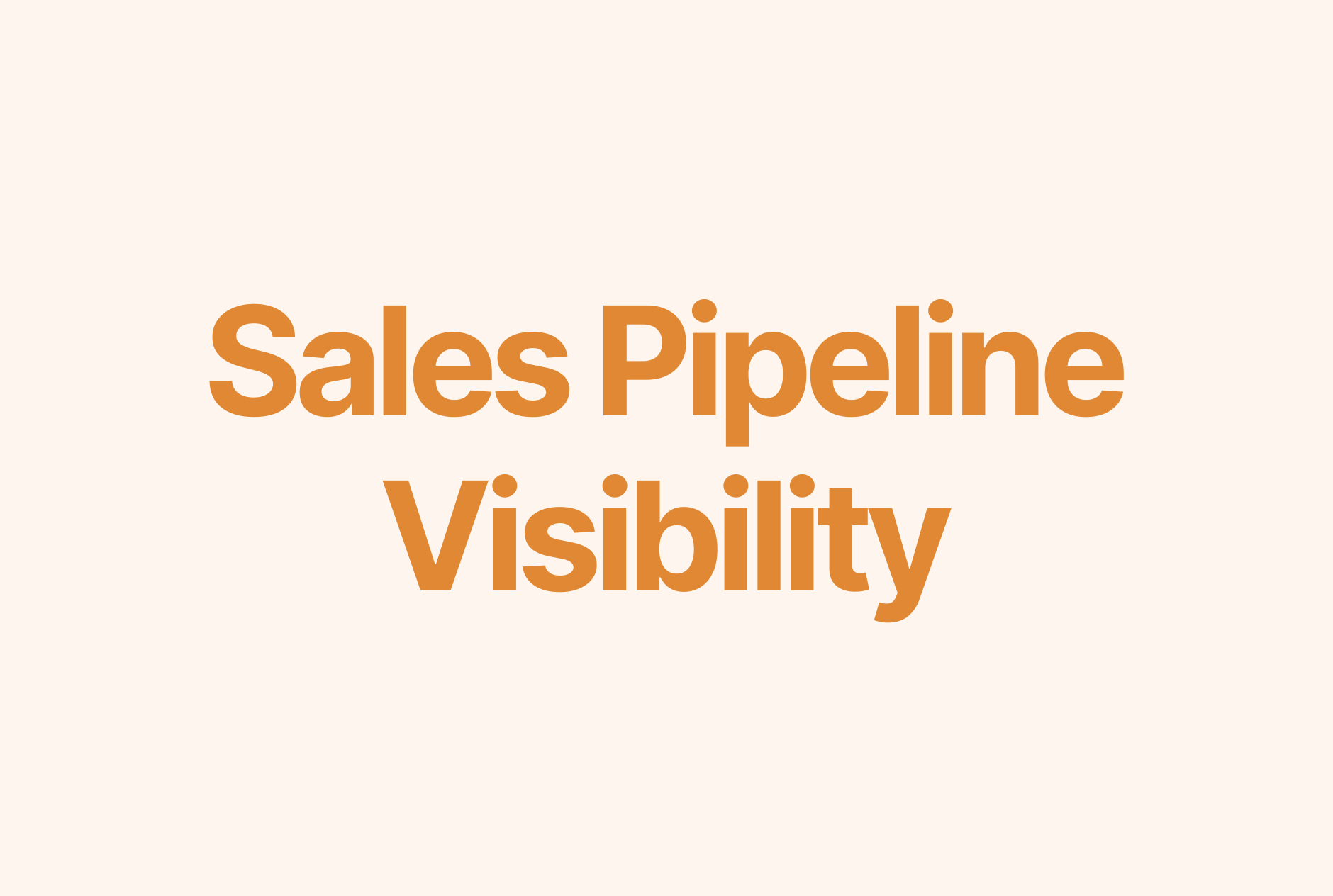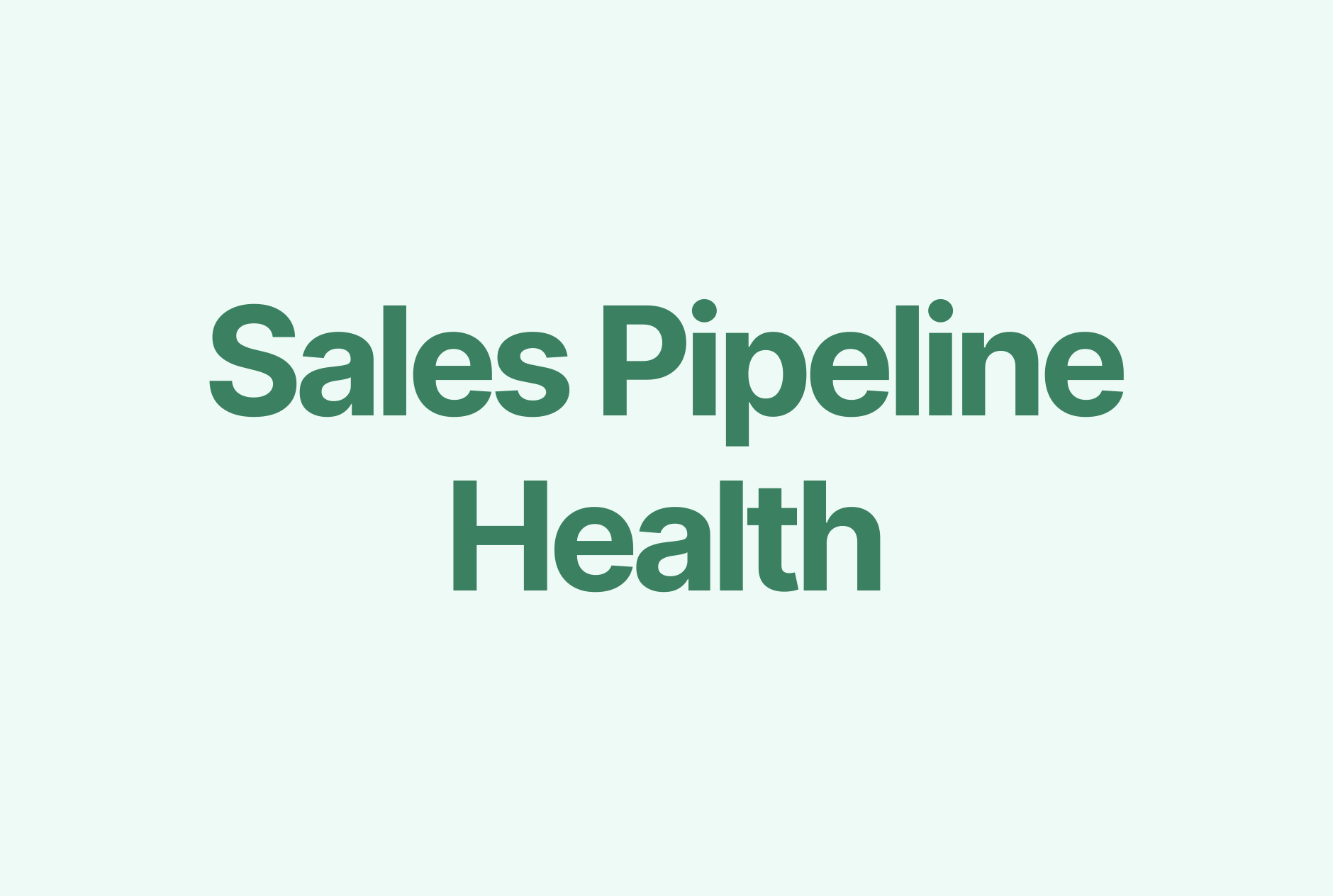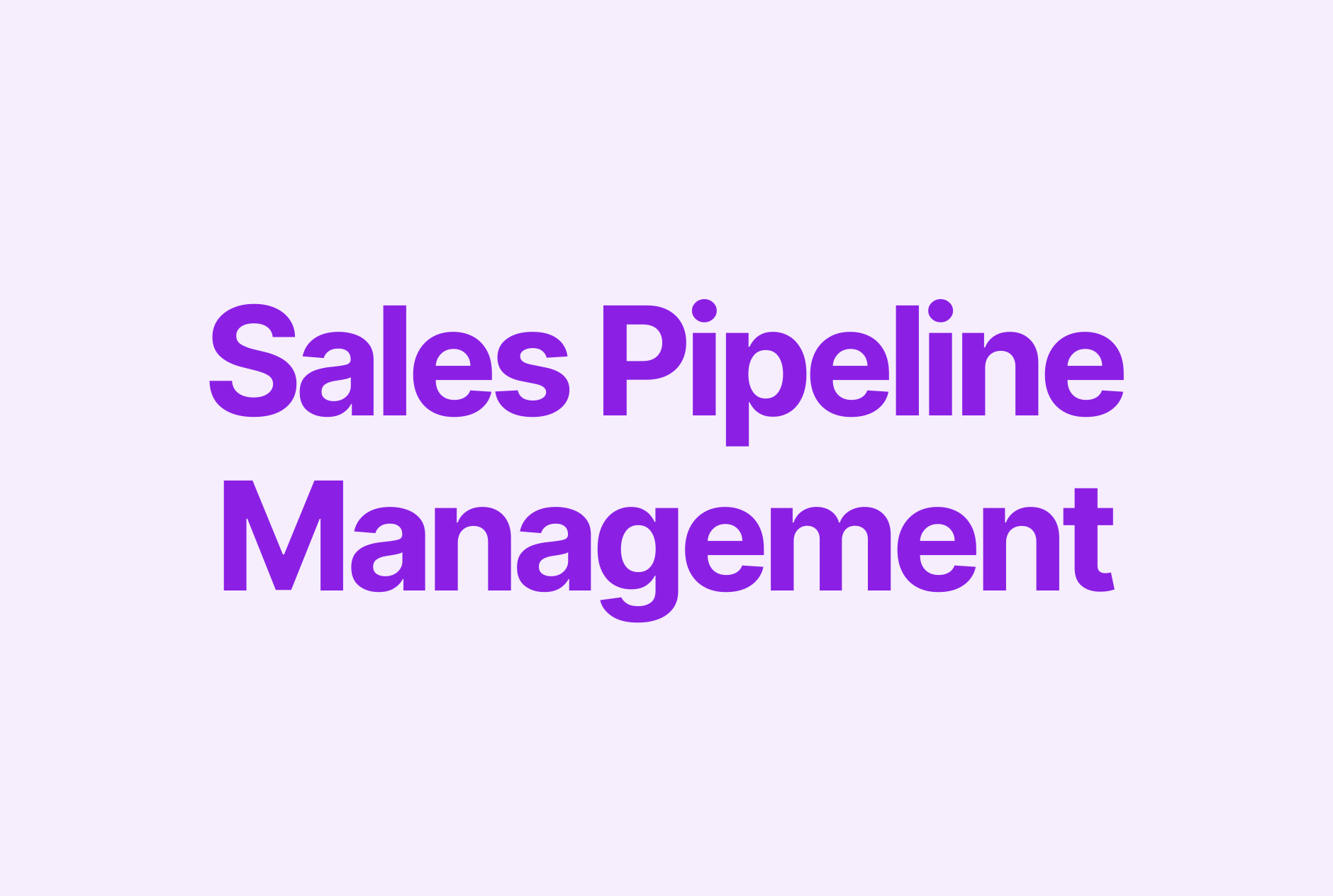A Quick Guide to Sales Pipeline Stages

What are the different sales pipeline stages? Which best practices should you follow at each stage of the pipeline? Read this guide to find out.
1. Discovery
In this first sales pipeline stage, you want to learn more about the prospect’s pain points and problems, as well as the economic impact of these if not solved.
You’ll also want to engage in lead qualification and find out if the prospect has a timeline in mind for solving the problem, as well as learn more about the budget they have available.
The Discovery stage starts the sales process and sets the tone for the entire customer relationship, so it’s crucial that you get it right. Follow these best practices for successful sales discovery:
- Perform pre-call research – Before you get on a discovery call with a prospect, make sure to prepare by doing some research. Check their company website and LinkedIn profile to learn as much as possible about them.
- Create an agenda for the call – To make your sales discovery call as productive as possible, create a meeting agenda and share it with the prospect beforehand.
- Focus on the prospect – A lot of sales professionals make the mistake of trying to jump to the solution as soon as possible. The sales discovery call should be all about the prospect and the challenges they’re dealing with.
It’s also crucial to ask potential customers the right questions during the discovery phase. Avoid asking anything you could learn by doing a bit of research yourself. Instead, focus on intimate details such as:
- What are your goals?
- What’s your timeline for achieving those goals?
- What problem are you trying to solve?
- How does it impact your team?
- How does it impact you personally?
- What is the source of the problem?
- How much can you spend on solving this problem?
- What kind of results do you expect to see from a new solution?
- When do you expect to see those results?
- Is this currently a priority for you? Why or why not?
- Have you defined the criteria for selecting a vendor?
- What other solutions are you considering?
- What would make this process easier? Is there anything I can do to help?
2. Solution
At this stage, you showcase your solution for solving the prospect’s problem.
This is usually done in the form of a demo where you go over your product or service’s features and capabilities, as well as explain how your solution can address the prospect’s pain points and challenges.
Ideally, you’ll want to communicate with multiple stakeholders about your solution while enabling the internal champion for your solution to “sell” your solution to the other stakeholders at their company.
A good sales demo builds interest in your solution, eliminates the buyer’s concerns, and instills a sense of ownership. Follow these tips to deliver a good demo:
- Don’t jump straight into the demo – It’s important to work on developing rapport with the prospect by chatting about casual topics for a few minutes before getting into the demo presentation.
- Tailor the demo to the prospect’s needs – You should tailor the demo to show how you can solve the prospect’s specific pain points and problems that you uncovered during the Discovery stage.
- Leave some time for Q&A – Make sure to leave some time for the prospect to ask questions after you present your demo. This will ensure they have all the information they need to make a decision.
- Use dedicated demo software – You can use dedicated sales demo tools, such as Storylane, to deliver effective demos more easily.
Here’s what Rafael Sarim Oezdemir, CEO of Zendog Labs, says about having effective demo calls:
“The key is to go through your demo by telling a story and demonstrating value. Talk about how customers like your prospect use the product to uncover insightful data and prevent potential risks.
Bonus points if you can leverage insights from the discovery phase to tailor the story you tell on the fly. For example, you may want to skip certain parts of your demo to have more time for what matters most to the prospect. Do not just go through all the tabs, charts, and wonderful features of your demo in a transactional way.”
3. Proof of concept
This sales pipeline stage involves the prospect taking a test drive of your product in their own work environment.
One example of a proof of concept is a guided trial where you assist the prospect in using your product for 2 to 4 weeks. A guided trial is usually used for opportunities with a smaller deal size.
For larger deals, a pilot is a lot more common. With a pilot, the prospect or their team uses your product for 30 to 90 days in order to evaluate if it’s a good fit for their needs.
Use these best practices to ensure your proof of concept helps you win deals:
- Understand the prospect’s pain and use cases – You need to make sure you have an in-depth understanding of the prospect’s pain points and their use cases for your product.
- Agree on success criteria – It’s crucial that you agree on success criteria for the pilot with the prospect. Ideally, you want to have an informal agreement that the buyer will purchase the product if you deliver on the success criteria.
- Be proactive – Don’t assume that everything is going smoothly if you don’t hear from the prospect during the proof of concept stage. Reach out periodically to check how things are going and see if there’s anything you can do to help.
4. Negotiation & pricing
During the negotiation and pricing stage, it’s common for the buyer and seller to go back and forth on concerns, concessions, and pricing until they reach a final agreement.
This is also the stage where a lot of deals fall through.
Go through the negotiation stage more smoothly by following these tips:
- Come prepared – You need to be prepared to address any objections the buyer comes up with. It’s best to have a company-wide document that outlines all potential objections and how to address them.
- Manage your emotions – Negotiations can be stressful and frustrating. It’s important to keep calm at all times and not show any signs of frustration.
- Know when to walk away – Not all deals can be won, so it’s important that you know when it’s time to walk away from a deal. Usually, you’ll want to cancel a deal if the buyer makes unreasonable demands or refuses to compromise.
5. Closed won (or lost)
We’ve reached the final stage of the sales pipeline. Here, you’ve either closed the deal (closed won) or the deal fell through (closed lost).
Whatever the case may be, your work still isn’t done. You should make sure to track the following for closed won deals:
- Win rate
- Average sales cycle length
- Average deal size
For lost deals, it’s crucial that you determine and note down the reason why the deal was lost. This might be due to pricing, bad timing, or something else.
How to improve sales pipeline visibility
We’ve gone through an example sales pipeline. Now, let’s take a look at what you can do to improve sales pipeline visibility to reduce the chances of deals falling through and increase your forecasting accuracy.
Perform regular pipeline reviews
The first step to improving sales pipeline visibility involves performing regular pipeline reviews with your sales team.
Regular pipeline reviews allow managers to get a detailed overview of each sales rep’s pipeline. Among other things, a pipeline review might uncover that:
- Reps are over- or under-reporting on their sales pipelines.
- A sales rep is working on deals leaders are unaware of.
- There are potential issues or blockers that you can address to prevent a deal from blowing up.
Key metrics you should look at when determining whether you have a healthy sales pipeline include:
- Number of deals currently in the pipeline
- Average deal size
- Sales velocity
- Average win rate
For a successful pipeline review, make sure that the pipeline is clean before the review meeting.
Managers should also be acquainted with the details of each deal before the call to avoid wasting time on recapping each deal.
Finally, you should ask sales reps for a brief recap of the stages the deal has gone through, as well as inquire about any blockers or issues that can blow up a deal in its current stage.
Pro tip: Sales teams can streamline sales pipeline management and pipeline review by using Weflow to create custom pipeline views. Here’s how to do it:
Start by logging in to Weflow.
From the dashboard, click on the Pipeline menu item in the left-hand menu. Then, click on the blue All views button and then on +Add new view.

Choose a layout for your view (table or Kanban), type in a name, and select a record type.

Click Save.
If you’d like, you can further customize your pipeline view by using filters and adding or hiding fields.
Improve CRM data hygiene
Most CRM instances are filled with inaccurate or duplicate data, as well as incomplete contact and deal records. Poor CRM data hygiene can lead to inaccurate forecasts, missed opportunities, and lost revenue.
To improve CRM data hygiene, you can start by reviewing your CRM records, removing duplicates, verifying contact information, and addressing any inconsistencies or errors.
To prevent duplicate or missing records in the future, you can take advantage of a tool like Weflow, which automates sales activity tracking and email logging, allows you to update Salesforce records in bulk, and gives you multiple pipeline views to ensure you’re fully aware of the health of your sales pipeline.
Wrap up
Navigating through the different stages of a sales pipeline and closing a deal can be tricky, but we’re here to help. Bookmark the Weflow blog and come back for more help when you need it.











.png)